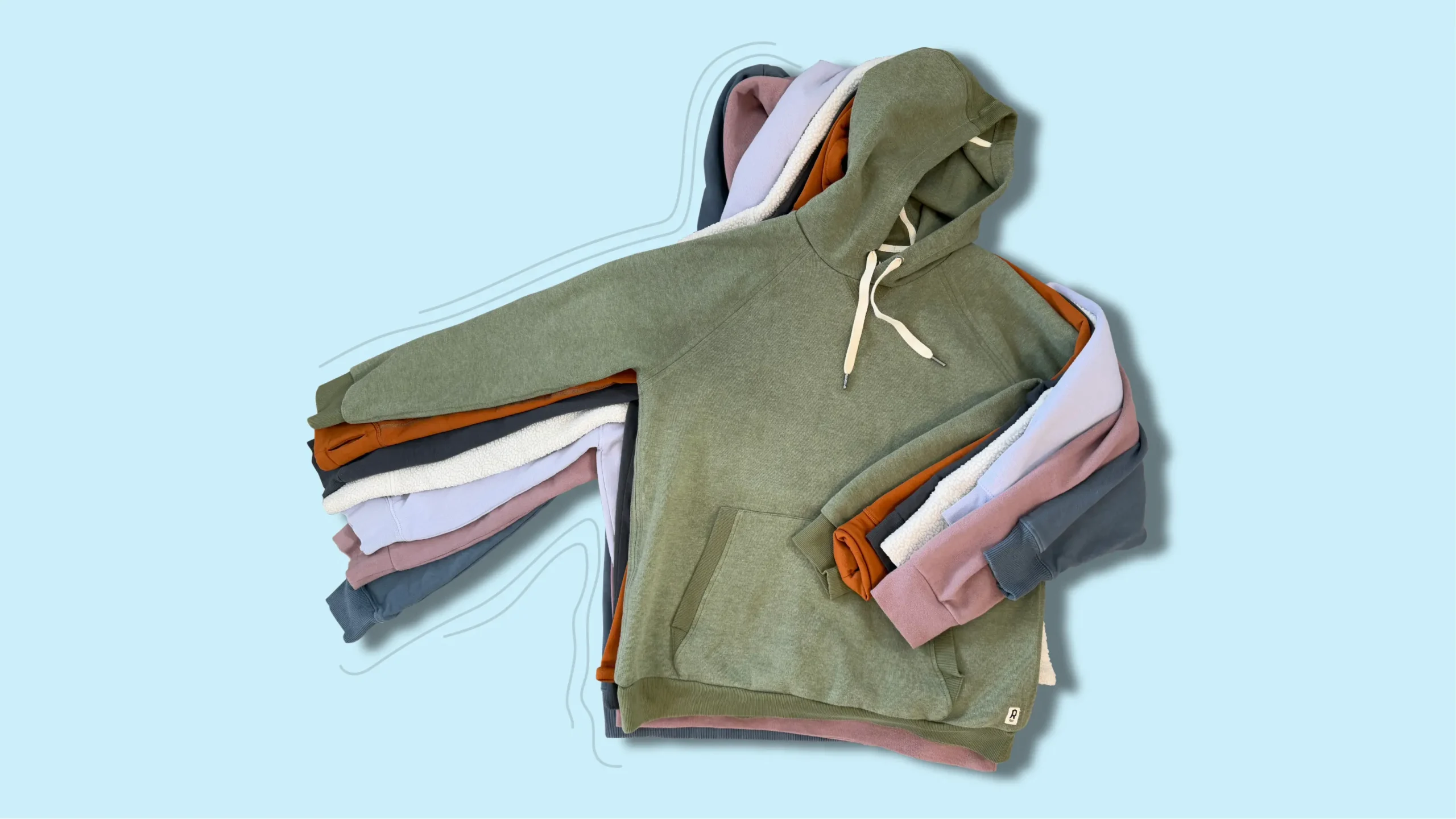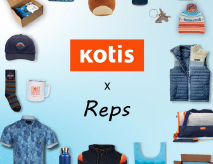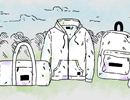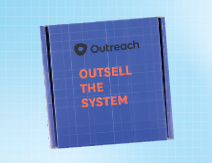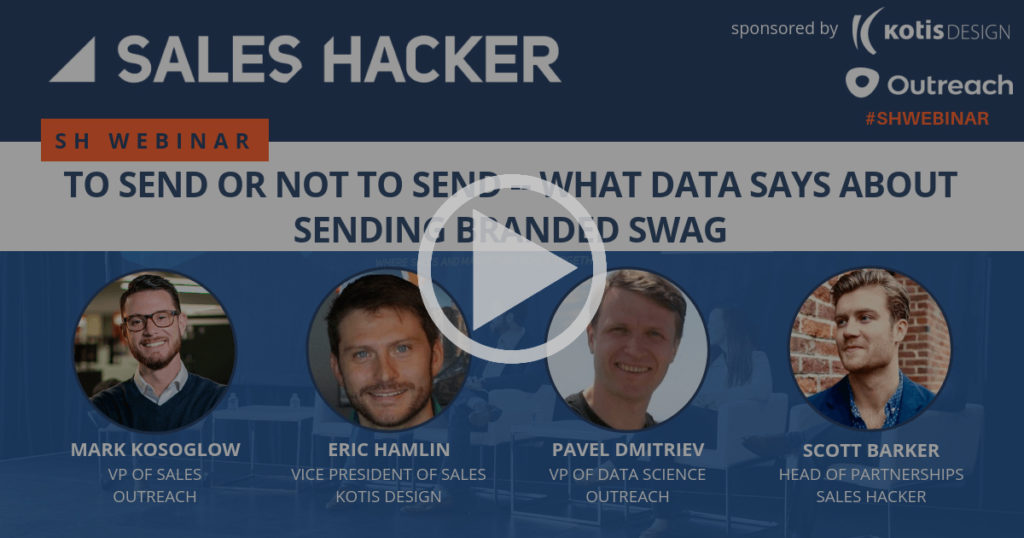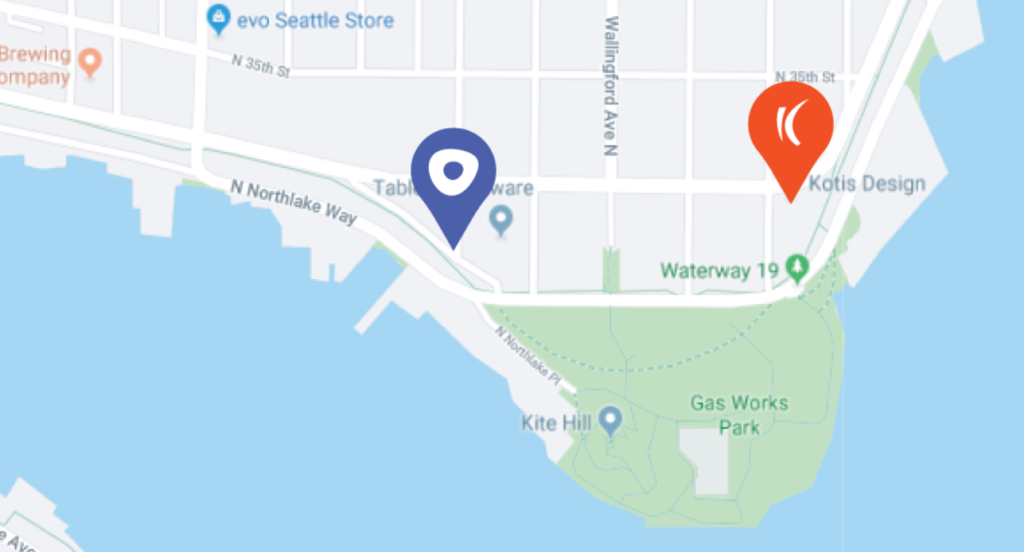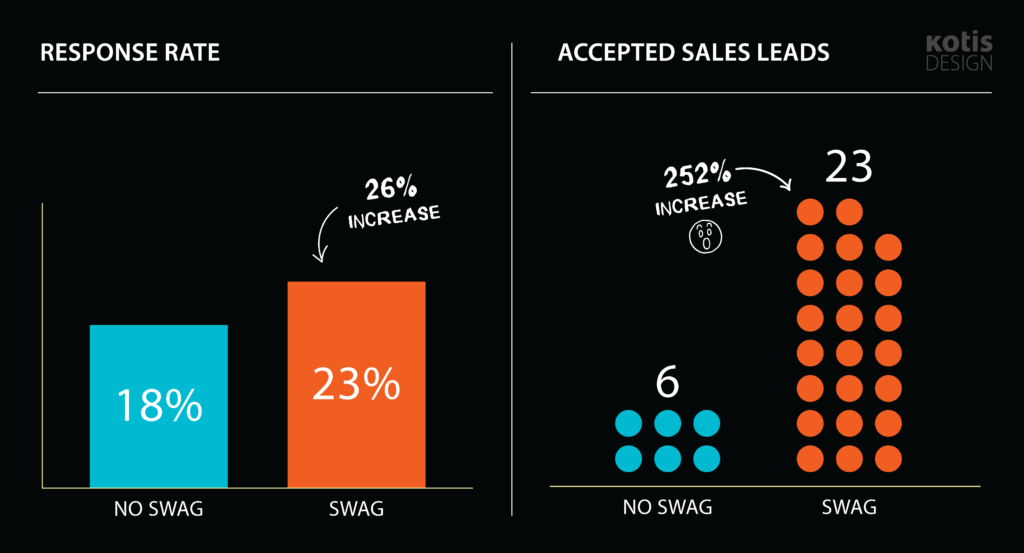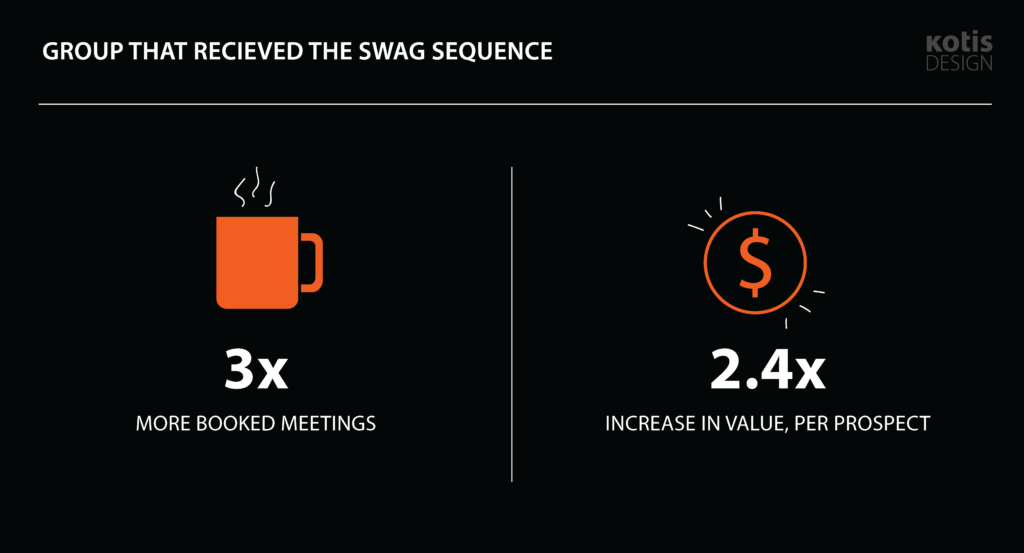Does Sending Swag to Prospects Work?
Eric Hamlin | June 26, 2019
Today you’ll see how Outreach increased their opportunity value per prospect by nearly 150% (in a single test). The best part? No major shifts in their marketing focus, no extra members on the sales team… just an efficient investment, backed by an A:B experiment.
For this experiment, we partnered with our friends at Sales Hacker and Outreach. Check out the webinar below or keep reading.
View our webinar with team members from Kotis, Outreach, and Sales Hacker, or continue reading below
The Backstory
Five months ago, we were at the tail end of a large evaluation of our sales technology partners and had decided to switch our Account Executive team over to Outreach. During that process I had the privilege of meeting Mark Kosoglow, their VP of Sales. It turns out, we were neighbors, our offices easily within walking distance from one another.
As we developed our partnership over the next several months, Mark asked me a question – “Does swag really work?”. For some, this industry-wide challenge might seem brash, especially when considering that I’ve built my 14-year career in swag around my core belief that promotional products (when done right) are a cornerstone of an effective marketing strategy. However, I understood his skepticism. Who hasn’t been to a tradeshow and left with a bag of ill-fitting t-shirts and flimsy pens?
Mark’s reservations about swag aren’t new to me. I’ve heard similar questions throughout my time at Kotis, and I usually reference the heaps of anecdotal data we have. Facebook increasing their spend on branded merchandise year after year. Google Cloud investing in new products to help their customer onboarding process. Even Mark’s company, Outreach, utilizing swag as an important part of their marketing toolkit over the last several months.
But there is always something missing from these stories, something so critical to tech companies and sales teams alike – our data. As Mark and I discussed some of the finer points of his software and how it could best support our business, it sparked an idea. Could swag-as-a-step work in a sequence?
Our industry puts out an annual report highlighting the effectiveness of swag, the most recent report can be found here, but we are concerned with sales. Specifically, would incorporating swag at the top of the sales funnel provide measurable lift in response rate, booked meetings (and ultimately landed deals)?
My Perspective
I frequently reference the 20th century French Sociologist and author, Marcel Mauss, who studied the idea of reciprocity. This implicit need to return the favor exists in business as well, and our team firmly believed that sending swag had resulted in more conversations (and ultimately more deals) for our company. We’d set up dozens of programs for clients that gave their sales team access to branded company swag, and the feedback was overwhelmingly positive.
But we didn’t have any hard data to point to. Of course, people love free stuff! Who doesn’t love getting a package in the mail? But were our clients getting a return on their investment?
Time for the PhDs
Enter Pavel Dmitriev, stage left. Mark suggested getting his Data Scientists involved to run a randomized experiment, and who better than Pavel? He had just spent the last decade running search experiments at Bing before moving to Outreach. Like a randomized control trial to certify new drugs, each group would receive a control (plain outreach sequence) or the test (outreach sequence with swag). It was important to ensure that our experiment would be accurate and measured, so Pavel handled the experiment design with his team:
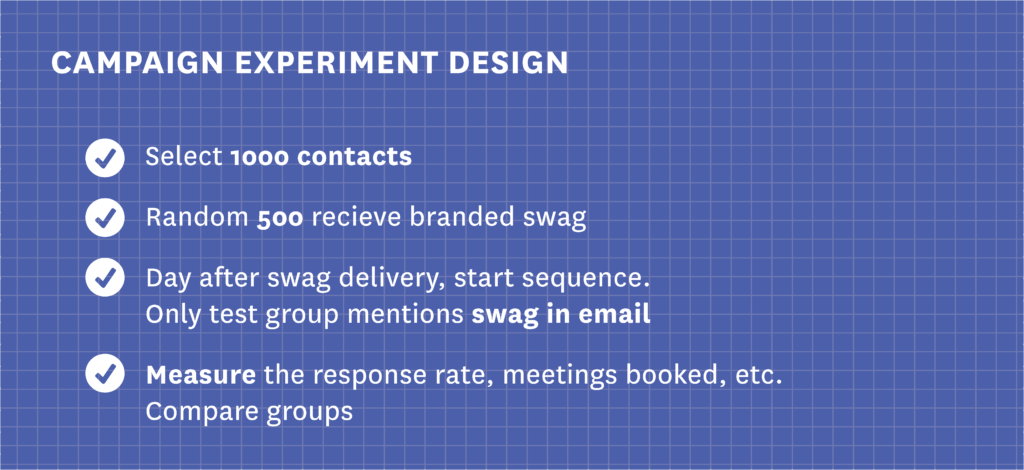
Boom. Experiment designed.
The Kit
Our team of swag experts here at Kotis designed a kit that was on brand and on message. Learn more about our kitting here.
You built a product to bring the world 10 years into the future. Why are you selling it with software from 10 years in the past?
The idea was to juxtapose new tech (the Qi wireless charger) with old tech (the flip-phone stress toy), along with two messaging cards. We then nested the items sequentially, with the complete kit telling a mini-marketing story. Outreach sent our team a list of 500 addresses, and we were off!
The Results
The Kotis warehouse team prepped and shipped the kits without breaking a sweat. The SDR team at Outreach executed the campaign flawlessly.
And I held my breath.
What if we didn’t see a lift? Did we just doom a booming part of our business?
Spoiler Alert: I probably wouldn’t be posting to our blog if that were true 🙂
The test showed that there was a 5% difference between the group that received swag and those who didn’t. This 26% increase in response would be huge for any business, but it doesn’t mean anything unless it was statistically significant and created value for the business, so we needed to dig deeper into the data…
And even the team here at Kotis was surprised by the results. The group who received the swag sequence not only responded more often, but each response was almost three times as likely to convert into a meeting and a 252% increase in sales accepted leads.
So, just to recap of the lifts that Outreach saw:
- A 26% increase in responses
- Triple the number of booked meetings
- A whopping 252% increase in sales accepted leads
Despite not being able to run complex experimentation in 1925, it turns out that Marcel Mauss was right in his theory of reciprocity. Outreach wasn’t done, they wanted to track the actual dollar value they received from the two groups. The ultimate takeaway?
Outreach saw a 2.42x increase in opportunity value, per prospect
So, I ask again. Does sending swag to prospects actually work?
The data says yes.
Looking to incorporate swag into your outbounding process? Don’t go sending wireless chargers to all of your clients on a whim. Outreach found success because they incorporated relevant swag as a cohesive part in the marketing strategy. I’ve been happy to help dozens of companies figure out what swag items make sense and how to test their effectiveness. Ready to go? We’d be happy to help!
